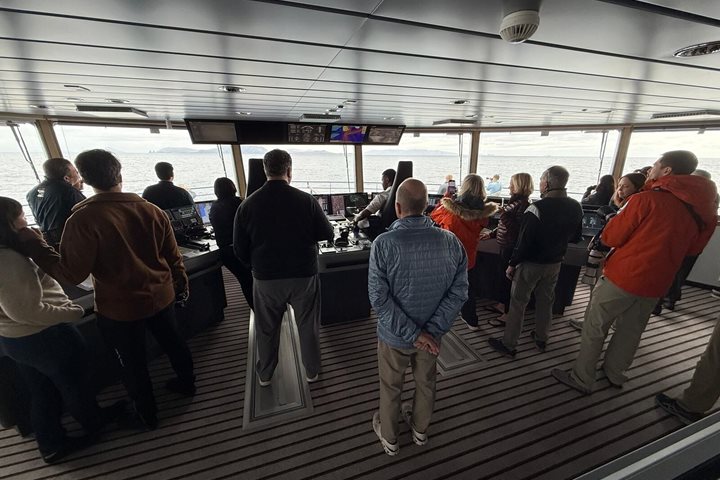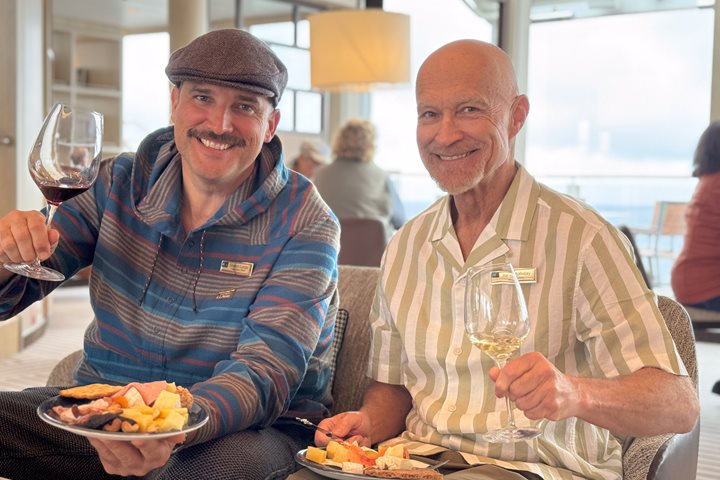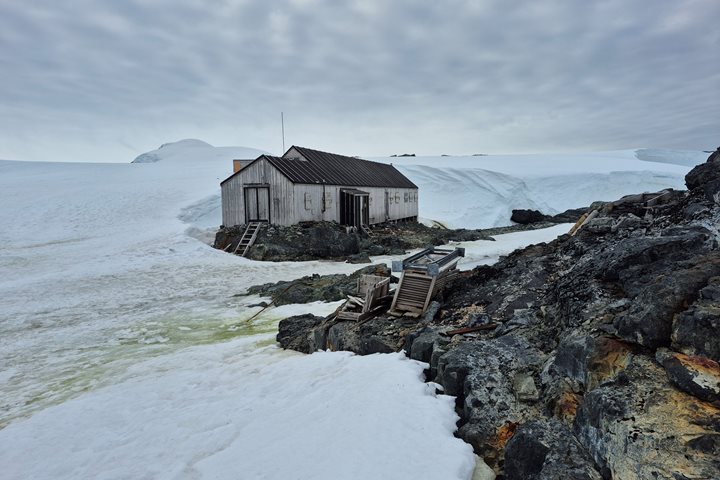Our last day in the Antarctic Peninsula region gave us in one day the broad sweep of all the weather, ice, and wildlife we’ve been experiencing all week. With a rugged ice piedmont and cliffs forming a backdrop, broken clouds turned into blowing, wet snow in the morning as we shuttled between the historic Bransfield House at Port Lockroy, the birds and whale bones (and flightless midges!) on Jougla Point, and the warm sanctuary of the National Geographic Explorer. The snow later cleared, but the wind strengthened while we transited the scenic Neumeyer Channel, and as we entered the Gerlache Strait killer whales were sighted. Many of us braved the wind and waves out on the bow, while others were on the bridge, to watch the large group of these top predators as they finished eating a recent kill. After devouring our own delicious dinner in Dallman Bay, the winds abated and the low clouds lifted to reveal an extraordinary vista of ice, cloud and sky, layer upon layer, all lit by the lowering sun. Several groups of humpback whales allowed us to follow their own dining activities in this sublime setting before we finally turned north, heading out towards the Drake Passage and home.
2/28/2025
Read
National Geographic Resolution
Northbound Drake Passage, Cape Horn, and the Beagle Channel
This morning, we had a later start than usual after a late night enjoying the crew show. Our galley team gifted us with a fulfilling brunch. We then had a brilliant forum about climate change with the participation of our panel of experts onboard. Afterward, our expedition leader called us to the bow to see Cape Horn, which was only a few miles ahead. The good weather allowed us to have a smooth and fast crossing, allowing extra time to swing by Cape Horn, the most southern tip of the Americas. Over the PA system, Steven provided a very interesting description of the historical importance of this area, then Pablo read a beautiful poem, a memorial to the seaman lost at sea. We could see the monument in the distance, two metal sheets that depict an albatross in flight. During the afternoon, we enjoyed Madalena’s presentation about Women in Antarctica. This was an incredible voyage through the struggles and delays of allowing women to participate in science and logistics in Antarctica. We entered the Beagle Channel around 17:00 and we encountered black-browed albatrosses, cormorants, dolphins, and whales. On our final approach to the beautiful city of Ushuaia, we passed by Les Eclaireurs Lighthouse and some of the seals that live in the Bridges Islands Archipelago.







